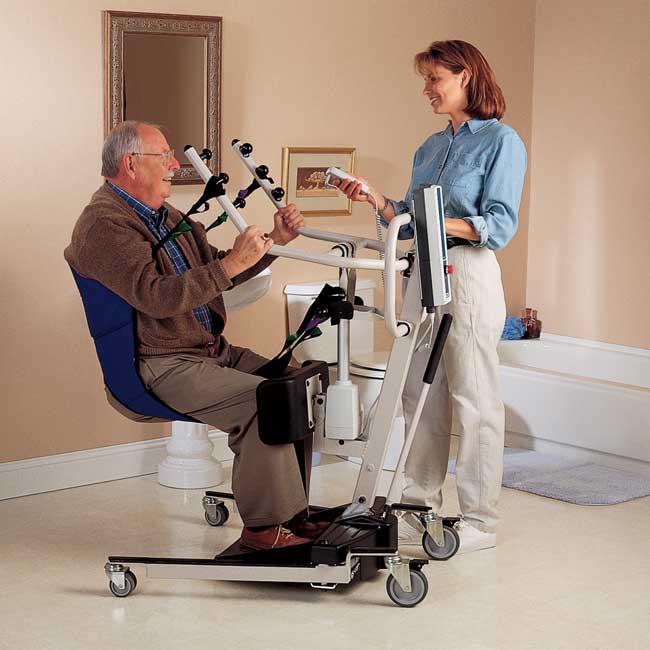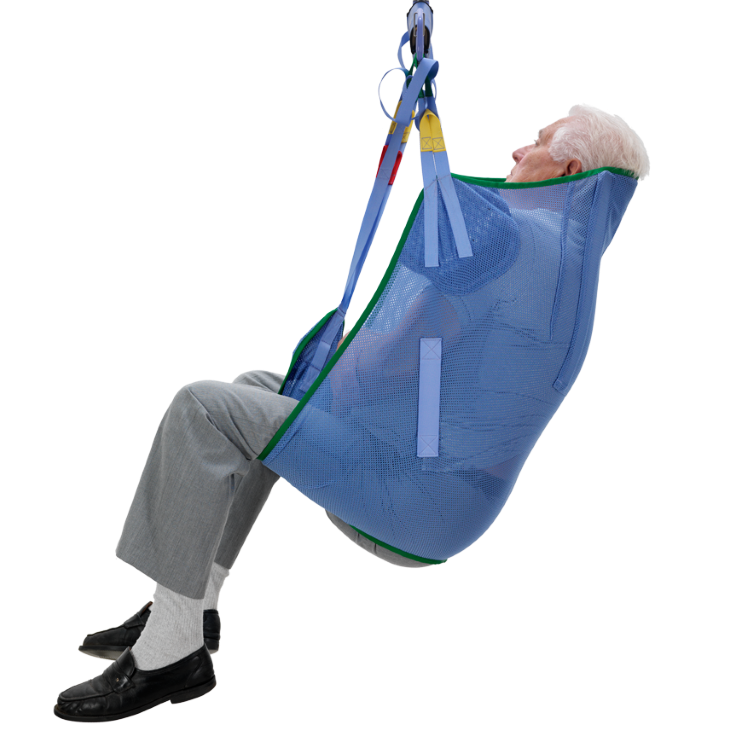

Grasp leg flap on one side of patient and, while holding against knee, pull leg flap forward repeat with other side until sling is in correct position. Have patient lean forward slightly and slide open portion of sling down to seat and lay leg flaps alongside patient's legs. If patient is in chair, you may place sling under patient without lifting patient by following these few simple steps: Pull sling through (like positioning draw sheet).Ĩ. Place sling folded half-way under patient so lower edge of seat is slightly below the knees.ħ. If patient is in hospital bed, position seat sling, then elevate head of bed to facilitate placing back piece.Ħ. Place narrower piece (back) just above small of back. Place wider piece (seat) under patient's thighs so lower edge of seat is up to knees. HOYER LIFT SLING FULL
For full hammock style slings place sling folded half-way under patient so cut-out is just below tail-bone.ĥ. (Raise side rail, if equipped, on side opposite attendant).Ĥ. Roll patient on side away from attendant.

Patient should be in center of twin size bed or to one side of double size bed.ģ. Arrange all items for a smooth transfer - lifter, sling, wheelchair.Ģ.
 Roll the patient back to a supine position on their backĭETAILED DIRECTIONS FOR USING COMMON HOYER SLINGS AND PATIENT LIFT SLINGSġ. Grab the folded part and drag it to the other side. Roll the patient back the other direction. Slide the folded sling under half the body. It is indeed a "process" that requires caregiver patience. Process - We won't say it's harder to use a Full-Body style sling, let's just say it's more time consuming. Loop the leg straps around patient's leg. Slide the back support behind the patient. Transfer to wheelchair, bed, and commode are easily accomplished with a U-style sling. U-Slings are the easiest to use and the patient is not sitting on the sling once seated. Easy - Patients that can sit up, even if only a little, are best candidates for U-Slings. Patients in a supine position may not be capable of using a U-Sling and may require use of a full-body type sling. U-Slings are the most effective for transfers and toileting, but some patients cannot use a U-Sling. There are several styles or types of Patient Lifts. It is not really a degree of difficulty, more of a process that can require caregiver patience. You can measure the degree of difficulty of using a Patient Lift Sling by the type of sling and the position of the patient. Using a Hoyer Lift Sling Degree of difficulty to use:
Roll the patient back to a supine position on their backĭETAILED DIRECTIONS FOR USING COMMON HOYER SLINGS AND PATIENT LIFT SLINGSġ. Grab the folded part and drag it to the other side. Roll the patient back the other direction. Slide the folded sling under half the body. It is indeed a "process" that requires caregiver patience. Process - We won't say it's harder to use a Full-Body style sling, let's just say it's more time consuming. Loop the leg straps around patient's leg. Slide the back support behind the patient. Transfer to wheelchair, bed, and commode are easily accomplished with a U-style sling. U-Slings are the easiest to use and the patient is not sitting on the sling once seated. Easy - Patients that can sit up, even if only a little, are best candidates for U-Slings. Patients in a supine position may not be capable of using a U-Sling and may require use of a full-body type sling. U-Slings are the most effective for transfers and toileting, but some patients cannot use a U-Sling. There are several styles or types of Patient Lifts. It is not really a degree of difficulty, more of a process that can require caregiver patience. You can measure the degree of difficulty of using a Patient Lift Sling by the type of sling and the position of the patient. Using a Hoyer Lift Sling Degree of difficulty to use:







 0 kommentar(er)
0 kommentar(er)
